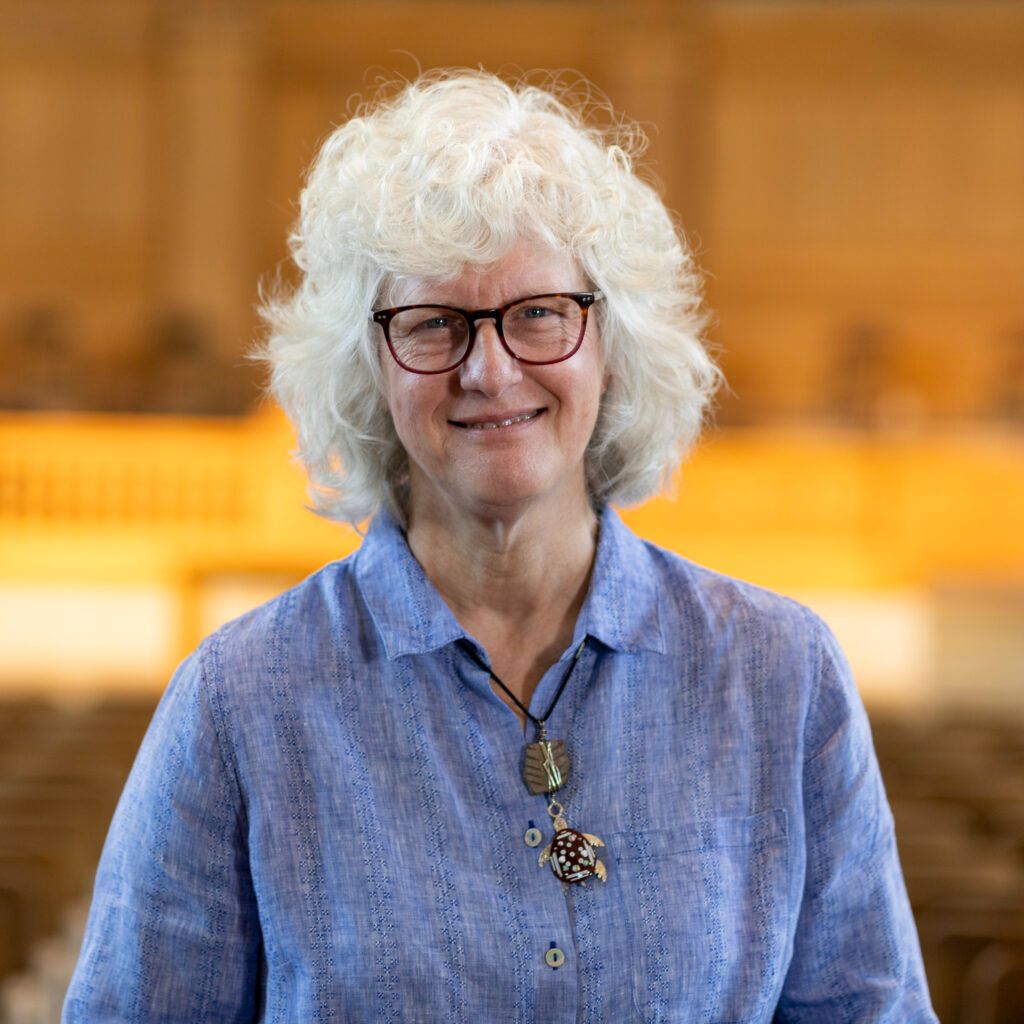Q&A with Jill Crainshaw
Faculty Feature

1. How long have you been teaching online?
This is my fourth year of online teaching.
I tested online teaching waters during the COVID-19 restrictions in 2020. Those initial forays were synchronous, via Zoom technology, supported by Wake’s Canvas platform.
I aspired even then to explore asynchronous pedagogies. I taught my first asynchronous course in 2021 and have designed and taught five different 3-credit asynchronous courses thus far.
2. What do you enjoy most about teaching online?
I delight in the diverse voices I hear through asynchronous teaching. Discussion boards, projects, weekly synchronous office hours, and more provide expansive spaces for all learners to share their experiences, questions, and insights. While there is a time delay in the discussion format (unlike the real-time exchanges in-person teaching), that delay often allows participants to reflect and savor the ideas they are encountering and vocalizing. That delay has also invited me to be creative in designing discussion prompts and assignments to account for the reflective pauses in responses. I celebrate that in my asynchronous courses, I get to hear every learner. My course participants teach me a great deal each semester. Online teaching has renewed my passion for teaching and ignited my desire to amplify learner voices through collaborative online learning strategies.
3. What do you find the most challenging?
What I relish about online teaching is also where I experience the greatest and most rewarding challenges. I spent several professorial decades in real-time, in-person teaching, and those years were gratifying as I journeyed with students through hard conversations and substantive discussions about material that mattered to them in their vocations. Learning how to tap into comparable passions and depths through asynchronous teaching has challenged me to examine my teaching style and strategies. As I began to design asynchronous courses, I found myself considering what became enlivening professional questions: Who am I as a teacher? What does it mean to teach? What teaching strategies most encourage learning and amplify learners’ voices? How do asynchronous teaching strategies, including digital supports such as VoiceThread, audio and video assignments, recorded presentations, etc., intersect with my course subject matter and professional discipline?
Wrestling with these questions was just the challenge I needed as I began my third decade of teaching.
4. What have you learned about yourself as an instructor through your online course?
Professorial identities are changing as we journey further into this era of social media, digital learning, and artificial intelligence. Developing asynchronous courses created time and space for me to gain awareness of what my primary aims are as a higher ed teacher in a Master of Divinity graduate program.
Teaching online also invited me to consider anew how teaching and learning communities are formed. What makes a learning community healthy? What structures need to be in place for students to engage with each other and course content in ever-deepening dimensions?
These questions have always guided my teaching. Online teaching provided the occasion for me to revisit them and discover new and more dynamic responses.
Wake Forest’s instructional designers have been vital to my learning process in the world of digital teaching learning and my professional growth. Weekly design meetings became opportunities to explore course ideas and develop strategies for bringing those ideas to life online. As a result, I am more excited about teaching now than I have been in many years.
5. What advice do you have for other online instructors?
Asynchronous course design and implementation have taught me much about the art and craft of teaching. Here are three bits of wisdom:
- Stay connected. Stay connected with students when you teach online. That is how online teaching thrives. Be in the discussions and respond regularly. Stay connected with instructional designers. They are excellent brainstorming partners and coaches, and they know how to make online teaching work.
- Be creative. Online teaching opens some doors to innovative approaches to course content and delivery. It also encourages student creativity.
- Collaborate. I collaborate more with online teaching than I ever have before. Colleagues have been generous in providing recorded interviews and conversations for course content, giving students a chance to hear multidisciplinary perspectives. Brainstorming sessions with other online teachers and instructional designers have also resulted in new teaching approaches. Teaching online has taught me much about how to collaborate.
- Teach. I do not intend this to sound flippant. Students show up in our classrooms with curiosities and questions, sometimes with questions they don’t even know to ask yet. I have challenged myself not to get too caught up in learning online technologies or strategies that I forget to build mutual teaching and learning relationships with students whose curiosities and callings can and do transform communities
Categories: Faculty Feature
